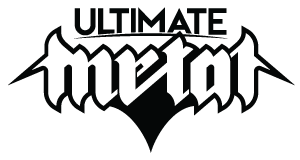- Feb 10, 2006
- 94
- 0
- 6
And here it is, the latest in a decade's worth of irrelevant releases from the "cult" of DarkThrone. I'm sure quite a few metalheads will be shocked by what they find on this disc, and I'm equally sure I will find that reaction baffling. The truth is that The Cult is Alive is merely the culmination of internal trends obvious in DarkThrone's work dating back at least to Panzerfaust.
Many (perhaps most) fans will view The Cult is Alive as a radical departure from DarkThrone's previous work. After all, their career to this point, with all its inspired highs and insipid lows, has taken place entirely within the context of black and death metal. The Cult is Alive, on the other hand, is essentially a straightforward crust/hardcore release with a few isolated genuflections in the direction of black metal (vocals and the occasional melodic turn, as in "De Underjordiske").
A careful listener, however, will notice that the technique used here is not substantially different from that employed on Transilvanian Hunger or the band's other black metal landmarks of the early 1990s (which just goes to show how ephemeral the aesthetic divisions in extreme music really are). The real differences are not so easy to pin down.
The brilliance of DarkThrone's classic works of 1991-1993 lay in the ability of these works to evoke ideas of great complexity through the careful manipulation of deceptively simple music. In this, these works were highly advanced despite being birthed from a spirit of atavistic primitivism. The characteristic expression of this art took the form of basic tremolo picked riffs made gloriously ambiguous through extended phrases and a resolute refusal to allow melodies to resolve in any predictable fashion.
The Cult is Alive retains a significant portion of the technique of DarkThrone's classic works, but the spirit that once guided them is long dead. The feral beauty and ambiguity are gone, and the riffs, while superficially similar, are rendered inert through shortened phrases and a tendency to pander to the dumbest members of the audience by bringing each riff to the expected rhythmic and melodic conclusion, suitably violent to be sure, but, like all product, lifeless in that it substitutes the simulacra of emotions for any overarching idea.
Not surprisingly, The Cult is Alive is long on pretense and contempt for its audience, and perilously short of any meaningful creative impulse. Anyone who already has the classic works of Discharge has pretty much heard every riff on this album (and heard them without the annoying repetition and obnoxious production values). Many metalheads will be crying foul because this is a "punk" album. But the real crime isn't that DarkThrone released a punk album, but that they released the sort of terrible album that has been ubiquitous within the punk scene since the day someone figured out you could sell three chords and irony as if they alone constitute a sufficient reason to be.
8/100
Many (perhaps most) fans will view The Cult is Alive as a radical departure from DarkThrone's previous work. After all, their career to this point, with all its inspired highs and insipid lows, has taken place entirely within the context of black and death metal. The Cult is Alive, on the other hand, is essentially a straightforward crust/hardcore release with a few isolated genuflections in the direction of black metal (vocals and the occasional melodic turn, as in "De Underjordiske").
A careful listener, however, will notice that the technique used here is not substantially different from that employed on Transilvanian Hunger or the band's other black metal landmarks of the early 1990s (which just goes to show how ephemeral the aesthetic divisions in extreme music really are). The real differences are not so easy to pin down.
The brilliance of DarkThrone's classic works of 1991-1993 lay in the ability of these works to evoke ideas of great complexity through the careful manipulation of deceptively simple music. In this, these works were highly advanced despite being birthed from a spirit of atavistic primitivism. The characteristic expression of this art took the form of basic tremolo picked riffs made gloriously ambiguous through extended phrases and a resolute refusal to allow melodies to resolve in any predictable fashion.
The Cult is Alive retains a significant portion of the technique of DarkThrone's classic works, but the spirit that once guided them is long dead. The feral beauty and ambiguity are gone, and the riffs, while superficially similar, are rendered inert through shortened phrases and a tendency to pander to the dumbest members of the audience by bringing each riff to the expected rhythmic and melodic conclusion, suitably violent to be sure, but, like all product, lifeless in that it substitutes the simulacra of emotions for any overarching idea.
Not surprisingly, The Cult is Alive is long on pretense and contempt for its audience, and perilously short of any meaningful creative impulse. Anyone who already has the classic works of Discharge has pretty much heard every riff on this album (and heard them without the annoying repetition and obnoxious production values). Many metalheads will be crying foul because this is a "punk" album. But the real crime isn't that DarkThrone released a punk album, but that they released the sort of terrible album that has been ubiquitous within the punk scene since the day someone figured out you could sell three chords and irony as if they alone constitute a sufficient reason to be.
8/100

